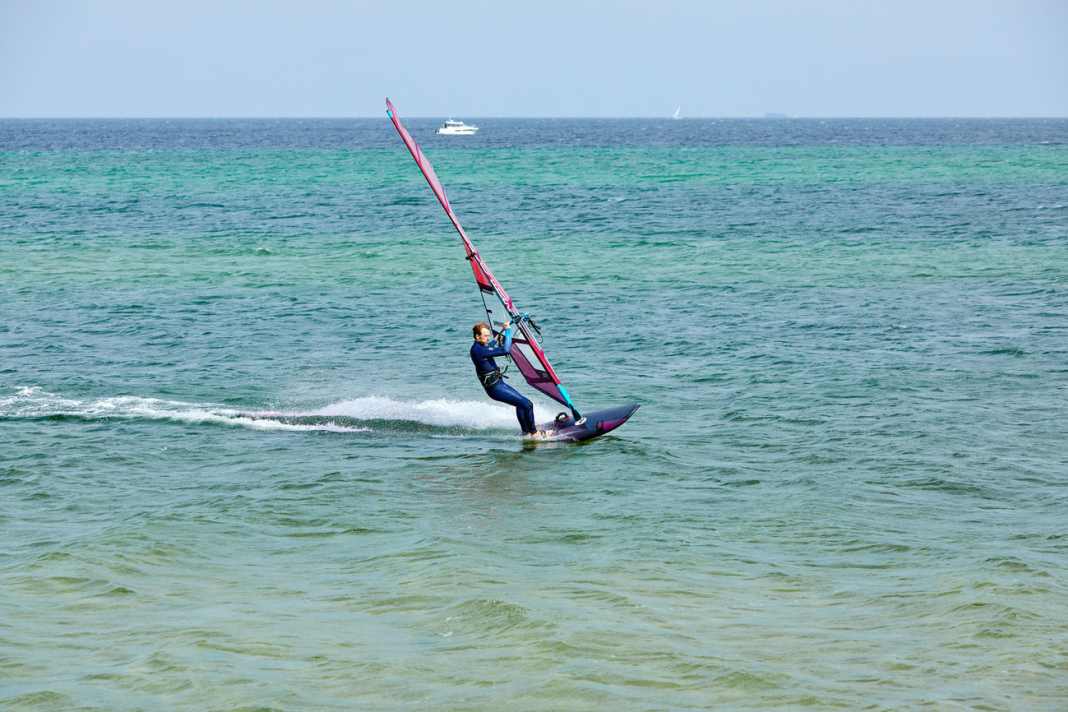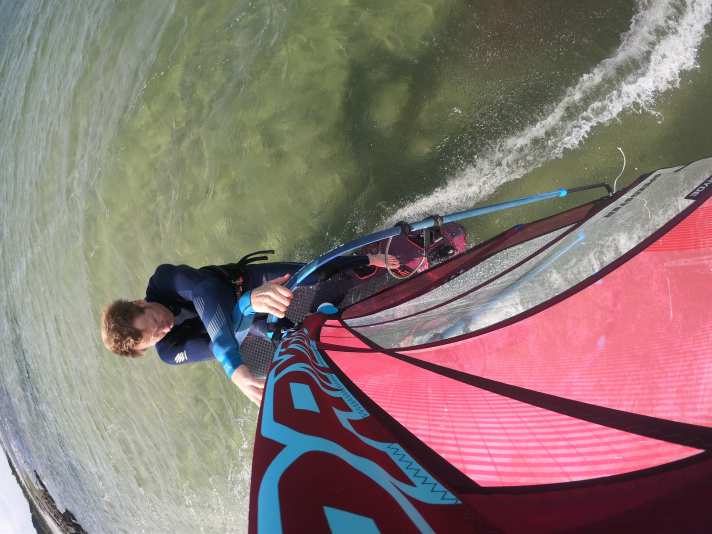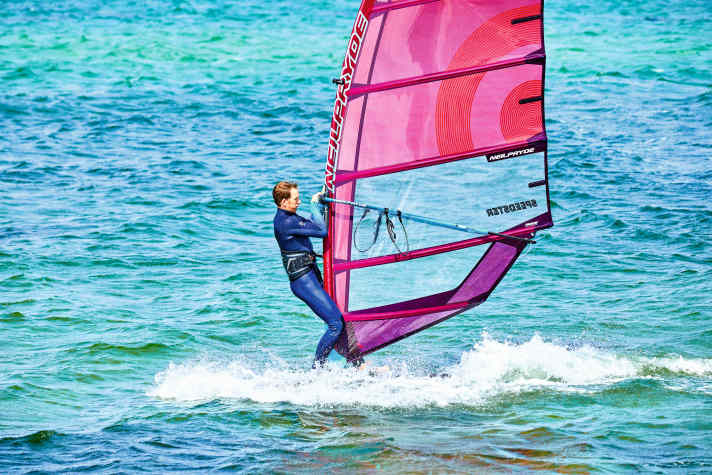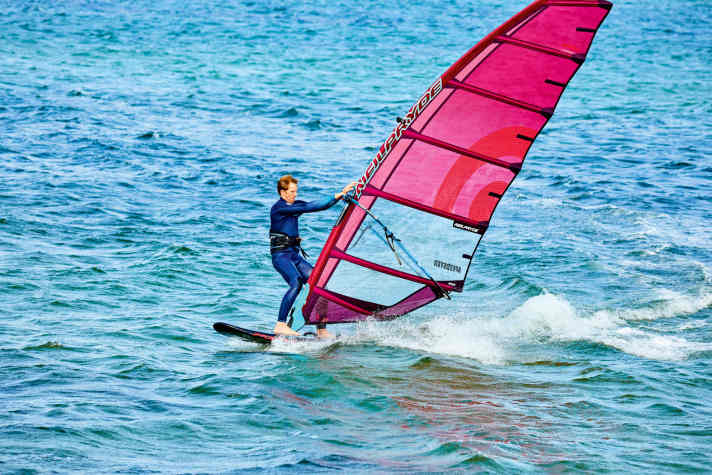





Jibing smoothly, that's what every windsurfer wants. On the other hand, you rarely hear hymns of praise for particularly great manoeuvres. But just as every football team needs not only the artists but also the pile drivers and painters, every manoeuvre repertoire also needs a solid tack - you won't win a flower pot on the water with chop-tip-1-2-3 alone.
The tack is an indispensable building block on the way to windward, especially when cruising. Even many pros prefer to tack rather than jibe, especially in waves, because you don't lose any height. However, what looks like an elegant hop to the other side from the outside makes many climbers on small boards despair. The turn can be practised perfectly on a longboard or large freeride board in light winds, and the correct technique for changing sides quickly becomes second nature. With a little practice and attention to the key points, you'll soon be able to do it on a small board too.
Timing tips for the turnaround
The time to change sides when tacking depends on whether you are planing or bobbing. The background to this is that the wind felt on the board (relative wind) is made up of the wind actually blowing (atmospheric wind) and the airstream. And because the airstream is understandably stronger when planing than when bobbing, the direction and strength of the relative wind also change depending on the speed of the surfer.

Hence oursurf tip: If you initiate the tack with foot control and full planing, you can change sides before the tip of your board points directly to windward, i.e. already on a hard upwind course. If, on the other hand, you initiate the tack using sail steering, you will have to wait much longer to change sides. In this case, pull the sail over the stern and wait until the foot touches your shin - this is the signal for the change.
The crux of the shortboard turn: The way around the mast
The step round the front of the mast is the most critical phase of the shortboard turn. If you lose the bow and fall backwards off the board, it's usually because you're tightening your arms too much.

Therefore, pay more attention to creating the necessary space - keep your arms long until you are round the front of the mast. Once you have reached the new side of the sail, pull the rig forwards past your body to initiate the following downhaul.

